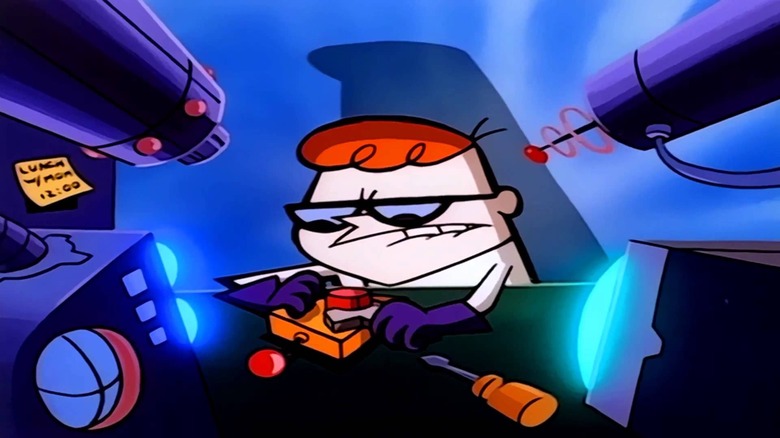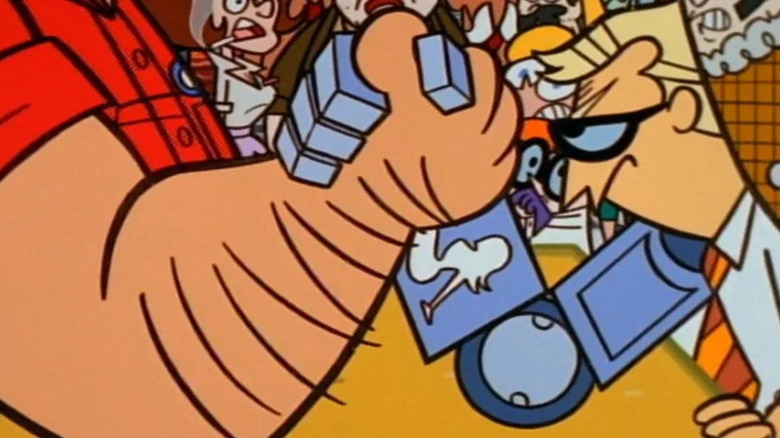Cartoon Network's Dexter's Laboratory Is Riddled With Sam Raimi References
"Dexter's Laboratory" changed the course of American TV animation. Like "Flapjack" after it, the cartoon gave many future legendary animators their start in the industry, from Craig McCracken and Butch Hartman to Rob Renzetti and one Seth MacFarlane. It also helped transform "The Powerpuff Girls" into a timeless hit.
The show started as a short in "What a Cartoon!" before becoming the very first Cartoon Cartoon. The man behind the show, Genndy Tartakovsky, has made hit after hit in a variety of genres and tones, from his influential "Star Wars: Clone Wars," to the devastatingly gory R-rated animated carnage of "Primal" or complex genre-bending tales of steampunk goodness like the criminally underseen "Unicorn: Warriors Eternal."
Much of Tartakovsky's style can be traced back to his work in "Dexter's Laboratory," from his use of silence to tell stories to his eye for iconography and imagery, along with his knack for pop culture references. Indeed, among the many sources of inspiration in "Dexter's Laboratory," like anime and Tex Avery cartoons, lies the work of Sam Raimi.
Speaking to SyFy Wire in 2021, McCracken recalled how "Army of Darkness," especially the scene where Ash builds his robot hand, became a North Star of sorts to Tartakovsky, who wanted to replicate it every chance he got. "He applied that sequence to the show all the time, especially when Dexter was building stuff," McCracken said. But it wasn't just that film; the segment "Dexter Dodgeball" also quotes Bruce Campbell in "Evil Dead 2" — and features enough devilish imagery to make Raimi fans happy, even in the context of a kids' cartoon.
The influence of Ash Williams on Dexter's Laboratory
It's easy to see why this sequence got stuck in Tartakovsky's head. It doesn't have dialogue except for Ash's "groovy" at the very end, but still manages to tell a clear story through its visuals. Raimi shows a clear sense of iconography, using his staple erratic zooms to make each ingredient and step of the robot hand feel monumental, from a screw being turned to a hammer being grabbed. It's got rhythm, it's got stakes, it's memorable. It is this style that Tartakovsky used time and time again in "Dexter's Laboratory," and not just in scenes where Dexter built stuff — although the "Hamhocks and Armlocks" segment where Dexter constructs a robot hand for his dad so he can arm wrestle a bully at a diner does feel quite reminiscent of "Army of Darkness" — but even in scenes like the ninja paper route race.
Of course, Sam Raimi movies aren't the only movies that "Dexter's Laboratory" references. There's an entire episode that parodies "Die Hard," with Dexter having to fight a janitor who traps him at school as revenge for making him work late every day (because Dexter always leaves last). That's on top of the many references to anime like "Voltron" and "Speed Racer."
Now, Tartakovsky's newest challenge is delivering an R-rated animated comedy about a dog getting "fixed." If the footage shown at Annecy last year is anything to go by, we're in for yet another Tartakovsky winner.

